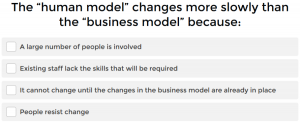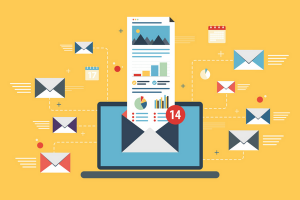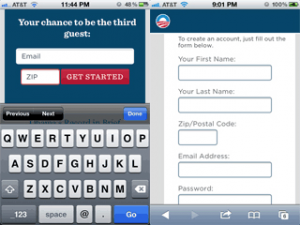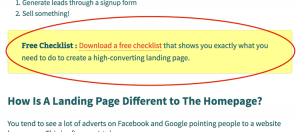Email marketing. Everyone’s doing it. You receive them every day. You may even have an inbox exclusively designated for that purpose. And as a business owner, you may be wondering what’s the best way to launch your own campaign. Or maybe you already have one, but your open and click through rates are lacking.
How can you move forward? Thankfully, you don’t have to reinvent the wheel. You can follow a tried and true blueprint…. And try a gazillion different iterations until you get that golden ticket. How so? Keep reading.
Why You Need an Email Marketing Strategy
While there are many ways to market a business, doing so via email is the most effective way to do so — it has a good ROI (4,200%), keeps your audience engaged, and it’s easy to measure. In addition, your target audience gets to read your content at a time that’s convenient to them.
That said, you do need to be strategic about it to yield optimal results. For example, businesses who segment their contacts have experienced about 760% increase in revenue; while 66% say that using artificial intelligence to automate when to send them had a bigger impact in their campaigns.
When reading statistics like these, it becomes apparent that you can’t just send messages and hope for the best. But with so many things to consider, how can you ensure which steps to take first?
16 Steps to Develop an Email Marketing Strategy
Before you become overwhelmed at the long list below, keep in mind that there are email marketing software platforms that can significantly streamline this process. So look for one that best suits your needs and get to work (but keep reading, because we have some cool tricks to show you that you can find in our favorite one — HubSpot).
1. Define Your Specific Goals
To know which route to take, you first have to know where you want to go. There are many reasons to launch an email marketing campaign: A weekly newsletter, lead nurturing efforts, promoting the launch of a product, re-engaging former customers, educating your audience on industry trends, etc…
2. Fine Tune Your Buyer Persona
Once you know your goal, you have to identify your ideal customers. What are their demographics? Age range? Educational level? Job roles? Most common challenges? Whom do they have to convince that your product is the cure-all for their problems? You’ll also want to identify the format they prefer to consume content (e.g. blogs, infographics, videos, podcasts, white papers), where they get their news, and their social media platform of choice.
3. Identify Industry Trends
You want to let your audience know that you’re an industry expert. You know what’s going on, the most cutting-edge technology, and all related developments. And you’ll most definitely want to know how all of these factors will affect your market. You can then leverage this information to communicate effectively with your audience.
4. Monitor Your Competition
You’ll also want to provide content that’s more complete than what your competitors are offering. Subscribe to their blogs and emails. Set up Google alerts. Monitor them on social media. Study industry hashtags and the conversations going on under their posts and Reddit conversations. This will help you identify common audience questions and concerns, so that you can address them in your own email marketing campaigns.
5. Come Up With an Enticing Lead Magnet
Competition is fierce — and not just within your own industry. Your audience is constantly asked for their email address by most (if not all) businesses they come across. So give them a compelling reason to also give you their email address. Make sure it’s something valuable to them: A discount code, free samples, a template, checklists, an eBook, or anything else that will make their lives easier.
6. Design Opt-In and Opt-Out Forms
This is where choosing the right email marketing software becomes a huge deal. You’ll want to design a form that matches your brand colors and brand voice; something that’s appealing to your audience, straightforward, and simple to understand. As for the opt-out version, include it in each email you send, even if it’s just a link that says unsubscribe. It’s not just the nice thing to do. It’s also required by law.
7. Build Up Your Email List
Building up your email list organically takes time. In addition to offering lead magnets and opt-in forms, promote your “Join Our List!” message on social media, website homage, and sales receipts. And you can advertise your lead magnets the same way, and include paid media to boost your efforts. Just don’t waste your time purchasing email lists, since you’ll just annoy recipients who never asked to hear from you in the first place. You’ll also be wasting your time, since chances are, they are not your target audience anyway, so it’s not like you’ll be getting any sales qualified leads that way.
8. Segment Your Contacts
There are several stages in the buyer’s journey — awareness, consideration, and decision. Someone who just visited your website for the first time should not be getting the same marketing emails as someone who has repeatedly purchased from you. By the same token, you can offer a lot of valuable information to someone in their research stage that may seem pointless to someone who’s already familiar with your product. So segment your contacts based on categories and craft ToFu, MoFu, and BoFu content that’s targeted to each of them.
9. Create Compelling Subject Lines
Even the most amazing marketing emails in the world will remain unread if your subject line falls flat. Limit it to 60 characters to avoid having it truncated, and let the reader know exactly what they’ll find inside. “X Steps to Increasing Conversion Rates,” “5 Ways to Lower Your Overhead Costs”, “Black Friday Deals Start Today”.
10. Draft Hyper Focused Content
If your audience wants to read a novel, they’ll find one in their home and get to it. So don’t include text that’s just as long in your marketing emails. Get straight to the point; and unless it’s a newsletter focus on one action item at a time. If your goal is to get people to download your new eBook, only discuss issues relating to it.
11. Optimize for Mobile Devices
When not at work, most people use their phones (and sometimes tablets) to go online. And if your emails are not optimized for these smaller screens, they won’t even bother to scroll right and left to see what you’re trying to say. Make things easy for them. Work only from an email marketing software that allows for such an interface. Optimize videos and images for mobile devices as well, for fast loading times.
12. Schedule Your Emails
One of the most convenient features of email marketing campaigns is automation. Craft several emails in one sitting, then preschedule all of them to deploy either at specific timeframes, or based on certain user behaviors — such as subscribing to your blog, downloading content, or leaving abandoned items in their shopping cart.
13. Automate Communications
In addition, there are certain communications that occur so often, you can use boilerplate while a real human gets back to readers. This includes Thank You emails, order status requests, and customer support tickets. It lets people know that their messages haven’t fallen through the interwebs cracks.
14. Conduct A/B Testing
Sometimes, you have to try several iterations of the same thing to see which ones audiences respond best to. This can be for seemingly minor details, such as colors, typography, CTA language, format, and email subject lines. However, only test one item at a time so that you can pinpoint exactly which element is the one causing the improvement.
15. Develop Action Oriented CTAs
Calls to action should be short. They should also include action words — Download eBook, Enroll in Webinar, Add to Cart, Schedule a Call, Subscribe to Blog, etc… And make sure the reader knows exactly what will happen when they click on the button. Vague language (such as Let’s Get Started or Click Here) won’t be as effective.
16. Analyze Data
The only way to know what’s working is to track its progress. You’ll want to study the open rates, click through rates (CTR), and conversion rates. All of these numbers will give you insights as to what’s working and what may need to be modified (such as email subject lines or CTA language).
How HubSpot Helps You Develop an Effective Email Marketing Strategy
Ok. So let’s go over why at Bluleadz, we are such raving fans of HubSpot. Yes, we are a Diamond Partner agency, and we could wax poetic about their benefits all day, every day. Some of our favorite features when it comes to email marketing campaigns include:
Contact Segmentation
Contact segmentation enables more effective targeted campaigns. HubSpot lets you do this in many useful categories, such as:
- Demographics (age, gender, income, education, marital status)
- Geographical location (country, state, city, and town)
- Psychographics (values and interests)
- Technographics (preferred technology to read emails: laptop, phone, tablet)
- Behavioral (habits, features they use the most, product use)
- Needs-based (must-haves based on their circumstances)
- Value-based segmentation (economic value and budget)
Easy to Use Templates
Lots of templates, drag-and-drop capabilities, call to action button creators. All of it can be used without any coding knowledge. And you can create one template and save it in your library to keep using in future campaigns. So your teams can focus on doing their jobs instead of taking time to figure out how to use complex software.
Syncs with CRM for a Better Customer Experience
HubSpot offers a free customer relationship management (CRM) software. And not only does it keep your contacts organized, all information relating to them is centralized in one location. This makes it easy for your marketing and sales teams to work seamlessly to provide an exceptional customer experience — and it integrates with your email marketing campaigns so that you don’t have to waste time on duplicative segmentation.
Personalized Content
Contact segmentation helps you deliver relevant content. And personalization helps you take it a step further. Greeting people by name and suggesting readings, action steps, and products based on their specific circumstances and preferences will make it more likely that the reader will engage with your content.
Lead Nurturing
HubSpot offers many ways to nurture your leads. Some of the features include developing buyer personas, automating targeted content, sending personalized emails, following up with leads, lead scoring, and allowing collaboration between your marketing and sales teams so that your contacts have a better customer experience.
Automated Workflows
You’re busy. Your team is busy. HubSpot takes things off your plate (or at least makes it feel like they do) by enabling you to customize and personalize every email. You can also set enrollment criteria (such as page views, ad clicks, or form submissions) for the software to enter contacts into each workflow.
Tracks Metrics
Remember how we mentioned the importance of tracking metrics? HubSpot does it for you as well — no need for third-party plug ins or worrying about integrations. You can set up your dashboard whichever way you want,, and keep an eye on your progress.
4 Examples of Effective Email Marketing Campaign Strategies
And now, it’s time to look at some real-life examples of companies that are doing email marketing right. These are all taken from my own inbox. You’re welcome.
Zappos
Have you ever placed an order from Zappos during the holiday season? While we’re all used to receiving order confirmation emails, they tell you all about the elves who rang sleigh bells as they placed your order on the truck, then sang carols as they closed the doors. If that doesn’t make you wanna order something again (or at least tell everyone about it), you’re a Grinch.
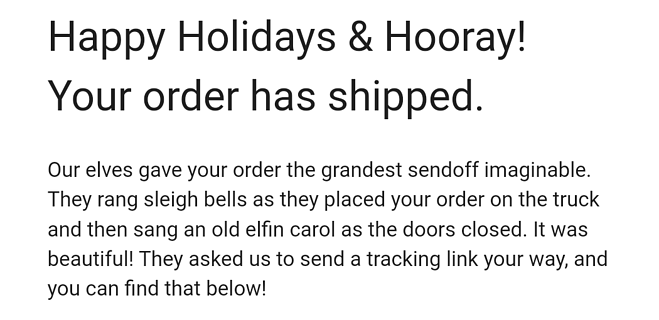
Kayak
Kayak sends a lot of useful content. Some recent examples include travel tips for women traveling by themselves, COVID-19 restrictions in European Union countries, and how to stay safe during hotel stays. Sometimes they also send low-fare alerts from local airports, but the whole point is that they don’t sound salesy. They regularly offer value.
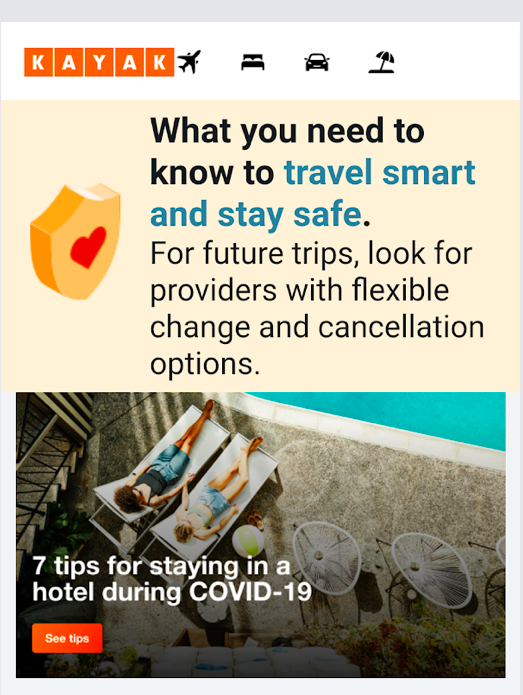
runDisney
If you’re not a runner, you’re missing out on these events. When you sign up for a runDisney race (whether it’s a 5K, 10K, half marathon, or the full 26.2 miles), you’ll receive training tips, information about getting your PhotoPass photos (race pictures), and congratulatory messages. Even if you were miserable while actually running the miles, you feel so accomplished and like a rockstar when you get an email telling you how great you are for doing so. It makes you wanna sign up for the next one.
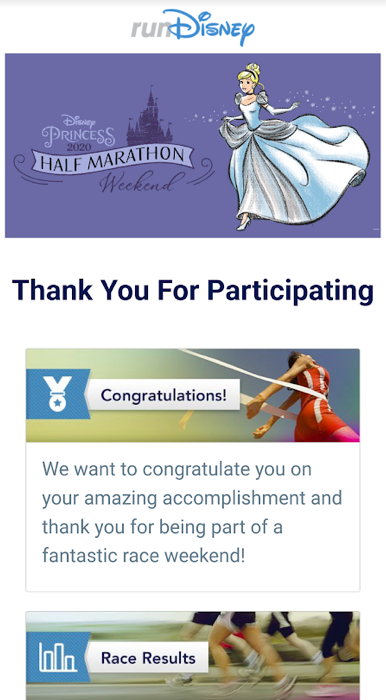
HBO Max
In the summer of 2021, I got an HBO Max account so that I could watch the film adaptation of In the Height — every day. Yes. I’m that kind of person. Once the movie was taken off the platform, I cancelled my account. But guess what? They emailed me to let me know about And Just Like That (the Sex and the City reboot), the Harry Potter series, and their new version of Gossip Girl. Now that’s a way to re-engage a former customer.
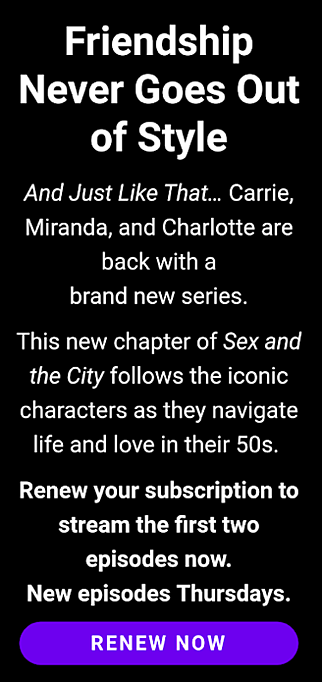
So there you have it. You have to have a north star, and develop intentional action steps along the way to reach them. And please, get creative. Be useful. Be funny. Be grand.
Digital & Social Articles on Business 2 Community
(111)
Report Post


